"The Kings over the Water" (or the Old and Young Pretenders): the last of the Stuarts in Rome.
One of my favourite things in St Peter’s Basilica is the funerary monument to the last of the Stuarts, not least because a piece of bonny Scotland in bella Roma has a wonderfully improbable air. It is to be found on the outside of the first pier to the left as one enters the church and is the work of Antonio Canova, Venetian neo-Classicist (and the first director of the Vatican Museums).
In 1719, James Francis Edward Stuart arrived in Rome in exile. The son of James II of England and Ireland and VII of Scotland, he was the claimant to the thrones of Britain and Ireland. For British and Irish Catholics he was “the King over the Water”. Many moons ago, towards the end of the last millennium, when I was at a nominally non-denominational but culturally profoundly Anglican school in London, he was called the Old Pretender. On Canova’s monument in Rome he is, however, described as King James III, one imagines rather to the chagrin of Jacobite Scots, for whom he would instead have been James VIII. The King who never was.
The second line of the inscription refers to him as son of James II, King of Great Britain. Which cavalier (so to speak) bit of geography presumably rather annoys any persisting Irish Jacobites too.
King James II and VII had succeeded to the throne upon the death of his brother Charles II in 1685. Charles had been a very High Anglican, perhaps an expedient to secure his claim to the throne for he converted to Catholicism on his deathbed. James, on the other hand, was an enthusiastic Roman Catholic—as well as profligate progenitor—whose personal religion was tolerated until June of 1688 when, aged fifty-five, he produced a legitimate and surviving male heir with his second wife Mary of Modena. This was a bridge too far and anxious Protestants—the majority of the landed gentry in England and Scotland, and even in largely Catholic Ireland—claimed the child to be supposititious, smuggled into the Queen’s bedchamber in a warming pan. This fear of a Catholic dynasty supplanting James’ presumed heiress, his Anglican daughter Mary—wife (and indeed cousin) of the vehemently Protestant Prince William of Orange—compounded by James’ indictment of Anglican bishops, contributed to the Glorious Revolution in November of 1688.
The deposed King died in exile near Paris in 1701, and parts of his body were divided between churches and religious institutions with Jacobite sympathies across France. The same year the extant Act of Settlement was passed establishing that no Catholic, and no one who married a Catholic, could become monarch. Upon the death of the exiled King his only surviving son, James Francis Edward, was claimed by Catholic Europe as his true successor and, following the failed Jacobite insurrections of 1715, was received by Pope Clement XI in the Papal States.
The Ducal Palace of Urbino boasts the room of the King of England, once again presumably wildly exasperating to that small band of Jacobites who remain (and who perhaps find themselves apoplectic in the Marche).
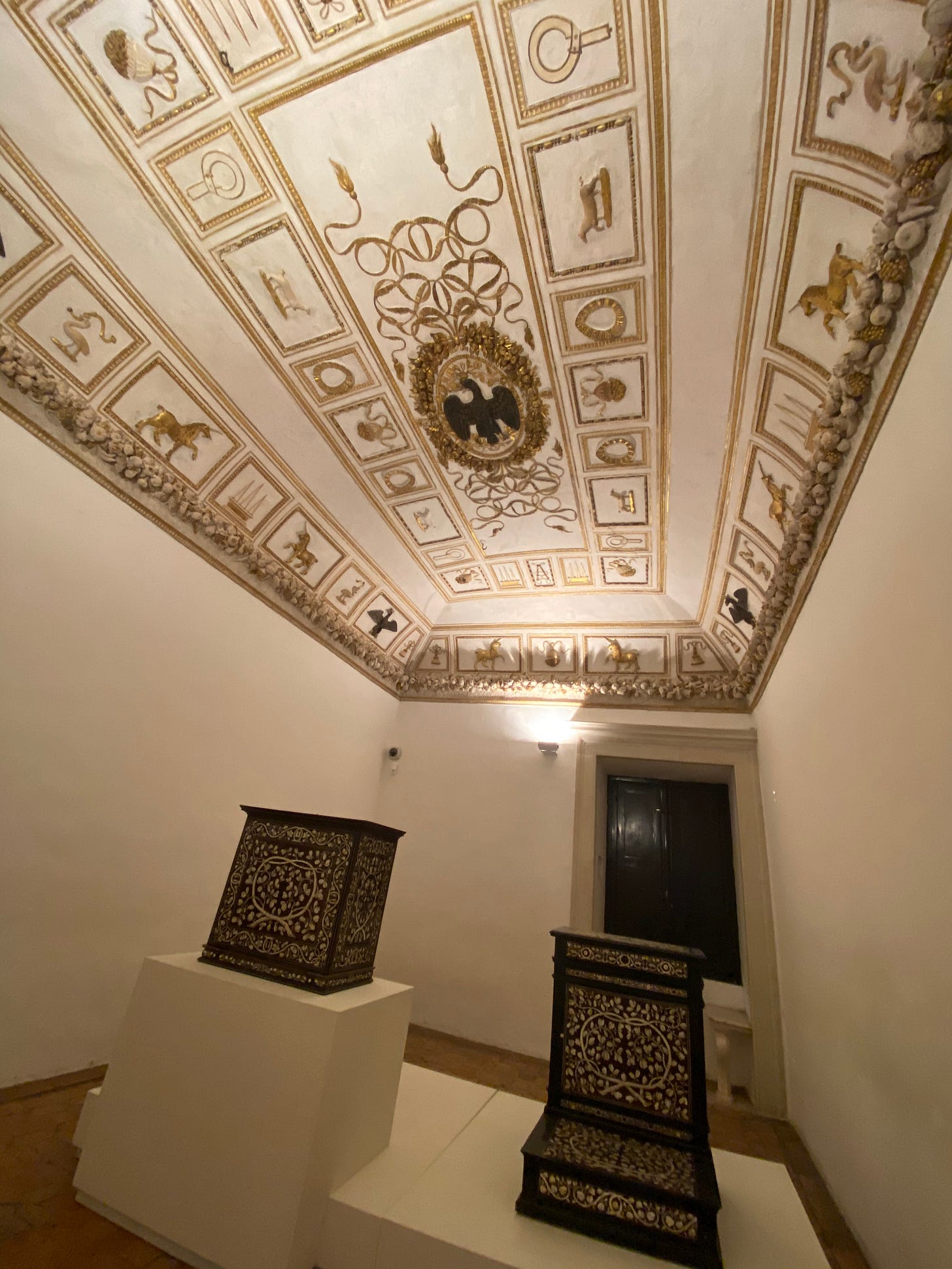
Following James Francis Edward’s marriage in 1719 Pope Clement offered him the use of the Palazzo Muti on piazza dei Santi Apostoli in Rome, rented from its owners at papal expense. This marriage was to the woman whose funerary monument is opposite that of the last of the Stuarts in St Peter’s (and not many women get monuments in St Peter’s), Maria Clementina Sobieski.
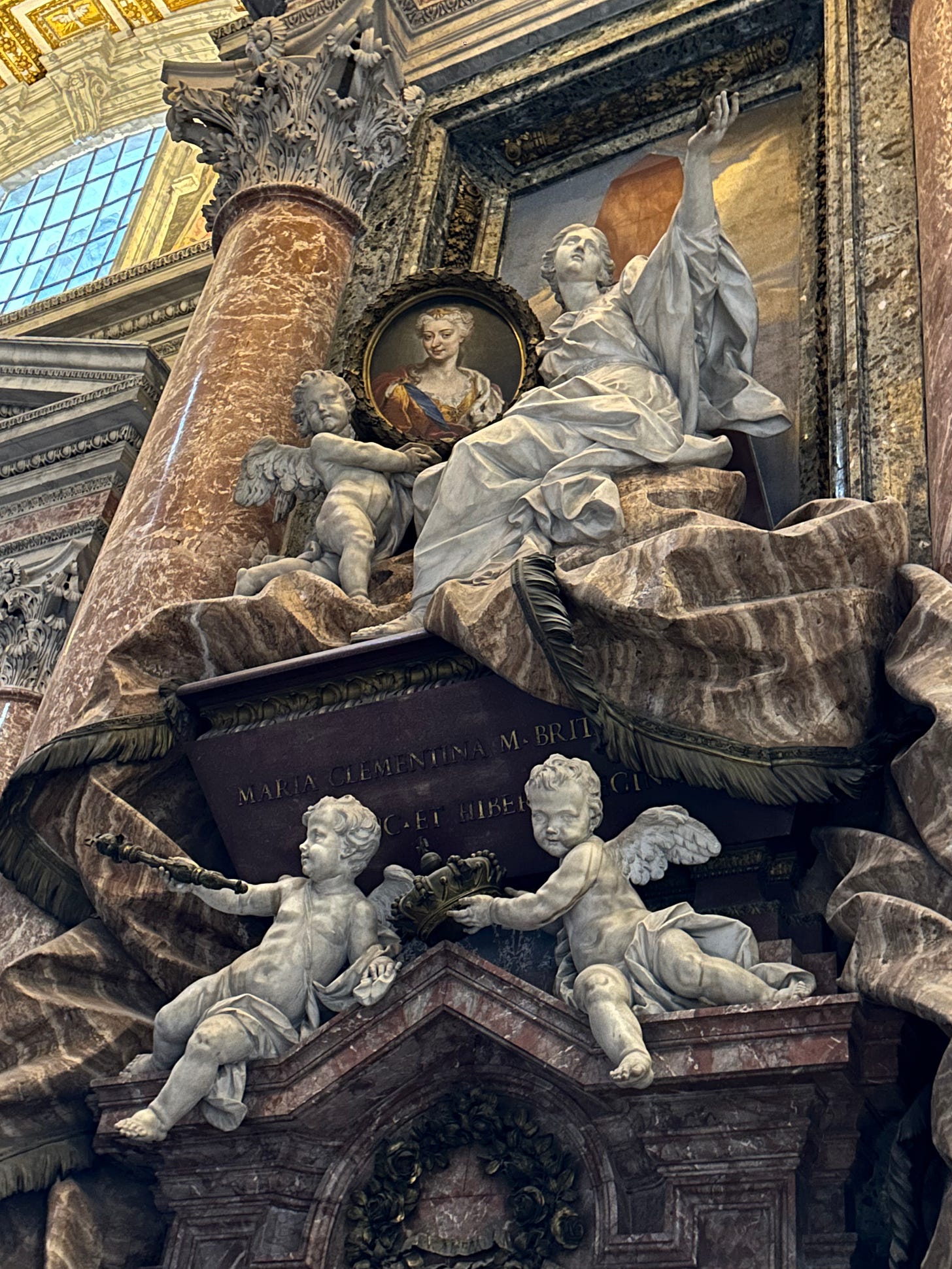
Pope Clement’s expedient papal dating agency sought to restore Jacobite claims to the British and Irish thrones with the genetic and economic input of Maria Clementina. She was the granddaughter of King Jan III of Poland and Lithuania who had, with his winged hussars, defended Catholic Europe from the invasion of the Ottoman Empire at Vienna in 1687, and her inheritances made her one of the wealthiest women in Europe. Despite attempts by King George I to thwart the union they were married near Rome at Montefiascone and took up residence on the piazza dei Santi Apostoli where the Pope styled them King and Queen.
The marriage of James Francis Edward—depending on one’s point of view either the “King over the Water” or the “Old Pretender”—to Maria Clementina produced, as Pope Clement had intended, two male heirs. The elder, Charles Edward Stuart, was born in Rome in 1720; the younger, Henry Benedict, in 1725.
As a child I knew of Charles as Bonnie Prince Charlie, possibly in part due to the sympathies of my (Protestant, but also vehemently Scots) very dear grandmother. (Mummy, I remember asking when I was perhaps five or six and bewildered by my first alarming inkling of complexity, was Mary, Queen of Scots a goodie or a baddie? Well, replied my mother, she was mostly a baddie, but don’t say that to Granny). However at my very English school Mary’s three-times great-grandson was instead always called “The Young Pretender”, and in 1746 his last, disastrous, attempt at reclaiming the throne he had always been told was rightfully his was thwarted at Culloden. He returned to France, where he drowned the sorrows of his thwarted birthright and became ever more erratic and irascible. Twenty years after Culloden, 1766, James Francis Edward died and his son, Charles, was invited to Rome to take up residence in Palazzo Muti by the Venetian Clement XIII. However this Pope Clement did not recognise Charles as King, as his father had been styled, and neither did the Catholic Kings of France and Spain. Charles’ claim to the throne had lost all support, and the once Bonnie Prince now cut a wretched figure. In 1788 he died in Rome, aged 67.
Meanwhile Charles’ younger brother Henry Benedict, styled Duke of York by Jacobites, had been created cardinal in 1747. In an example of pluralism which veritably thumbed its nose at the legacy of Luther, he was awarded lucrative benefices from Flanders to Naples; from Velletri to Corinth. Much of Cardinal Henry’s wealth came from lands he owned in Mexico.

Cardinal Henry’s first titular church in Rome was the glorious Santa Maria in Portico in Campitelli, an extraordinary ex voto built to house the ancient and miraculous icon in thanks for the Marian intercession considered to have brought an end to the plague of 1657. Still today at Frascati in the Alban Hills the via Duca di York recalls his donations to the city’s cathedral with gratitude. via Duca di York, piazza San Pietro, via Giacomo Matteotti: like most Italian towns Frascati’s street names are a gloriously and seemingly dissonant eclectic fusion; loyalties riddled with nuance; cardinals and communists.
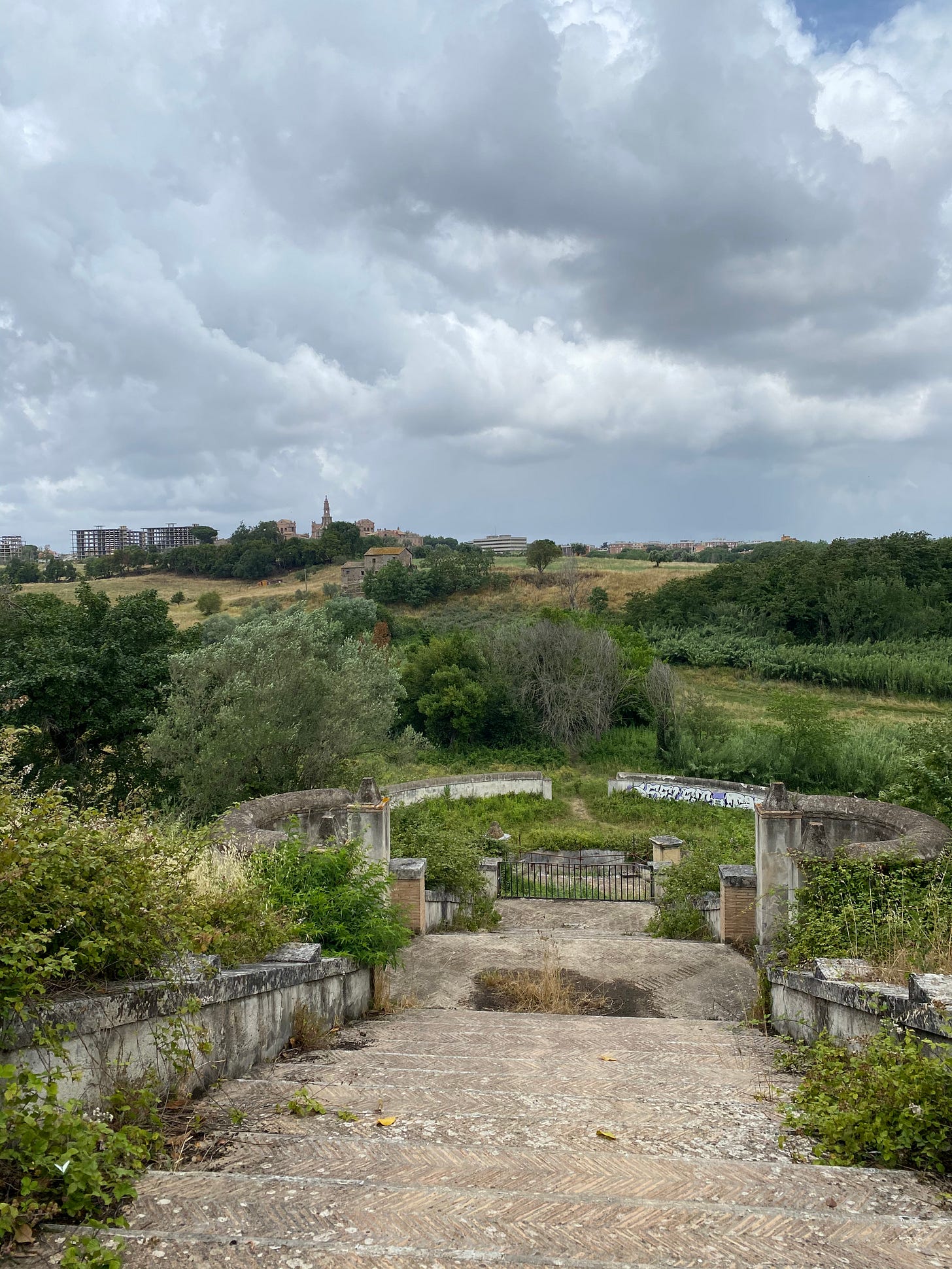
And back in Rome, in an unlikely field off the via di Bravetta, the name of Villa York recalls its owner between 1804 and his death in 1807. In early June 2020—those long, empty days of semi-lockdown when leaving the city limits was still off the cards—under muggily torrid cloudy skies my urban explorations became ever more eccentric. And so it was that my yearning for new places to explore took me and my Vespa down a dusty track on a side of town I don’t know at all. I climbed over a broken down fence in search of traces of the Stuarts and there I found the Villa York, in a state of abject abandonment all too evocative of those doomed dreams of the “Kings over the Water”.
After the deaths of Charles and Henry, Antonio Canova was called to design a suitable funerary monument to those kings who never were, replete with the Royal Standard. It is a piece of Catholic revisionism, a parallel history where King James III once ruled, and where Maria Clementina is proclaimed Queen of Britain, Ireland and, particularly creatively, France.
When I first arrived in Rome in 2000 I remember those disconsolate angels, weeping over the lost fortunes of the last of the Stuarts, were under restoration in a project sponsored by the Queen Mother. Despite having had the title of Queen of the United Kingdom herself she was, after all, both Scots and extremely posh, and thus also descended from those kings who never were. It is after all, as they say, complicated.

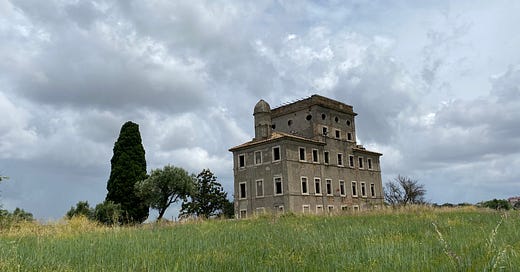



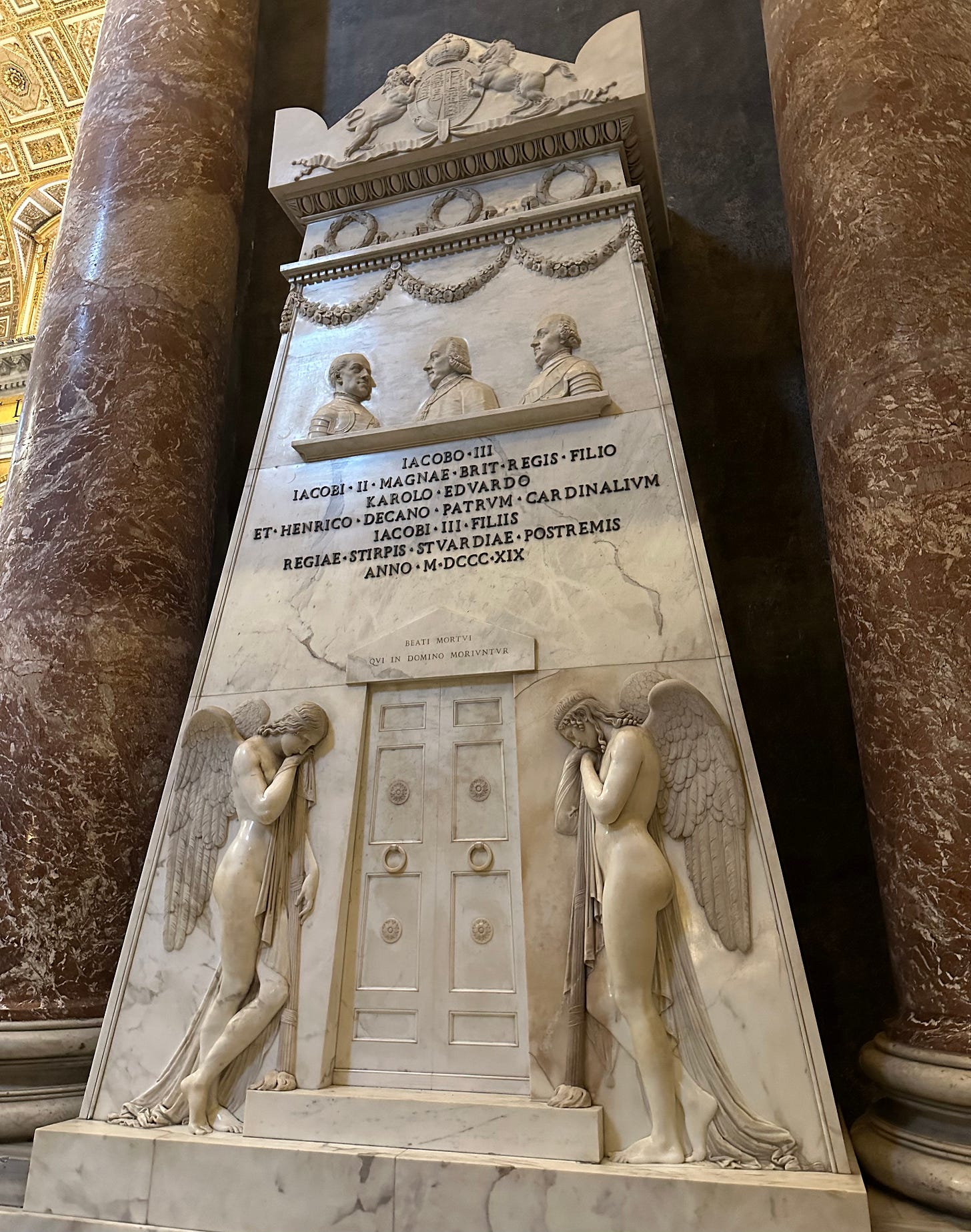
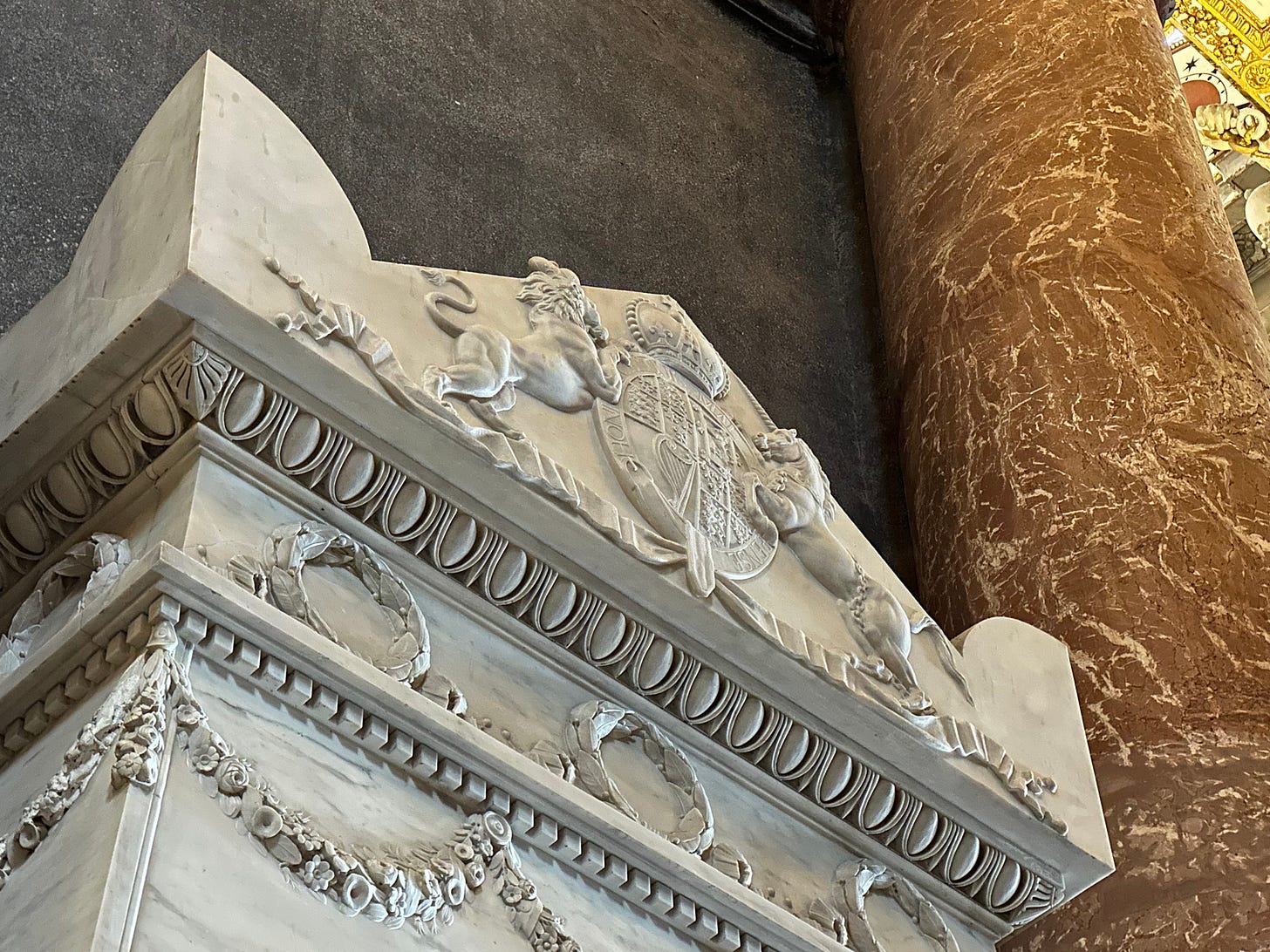
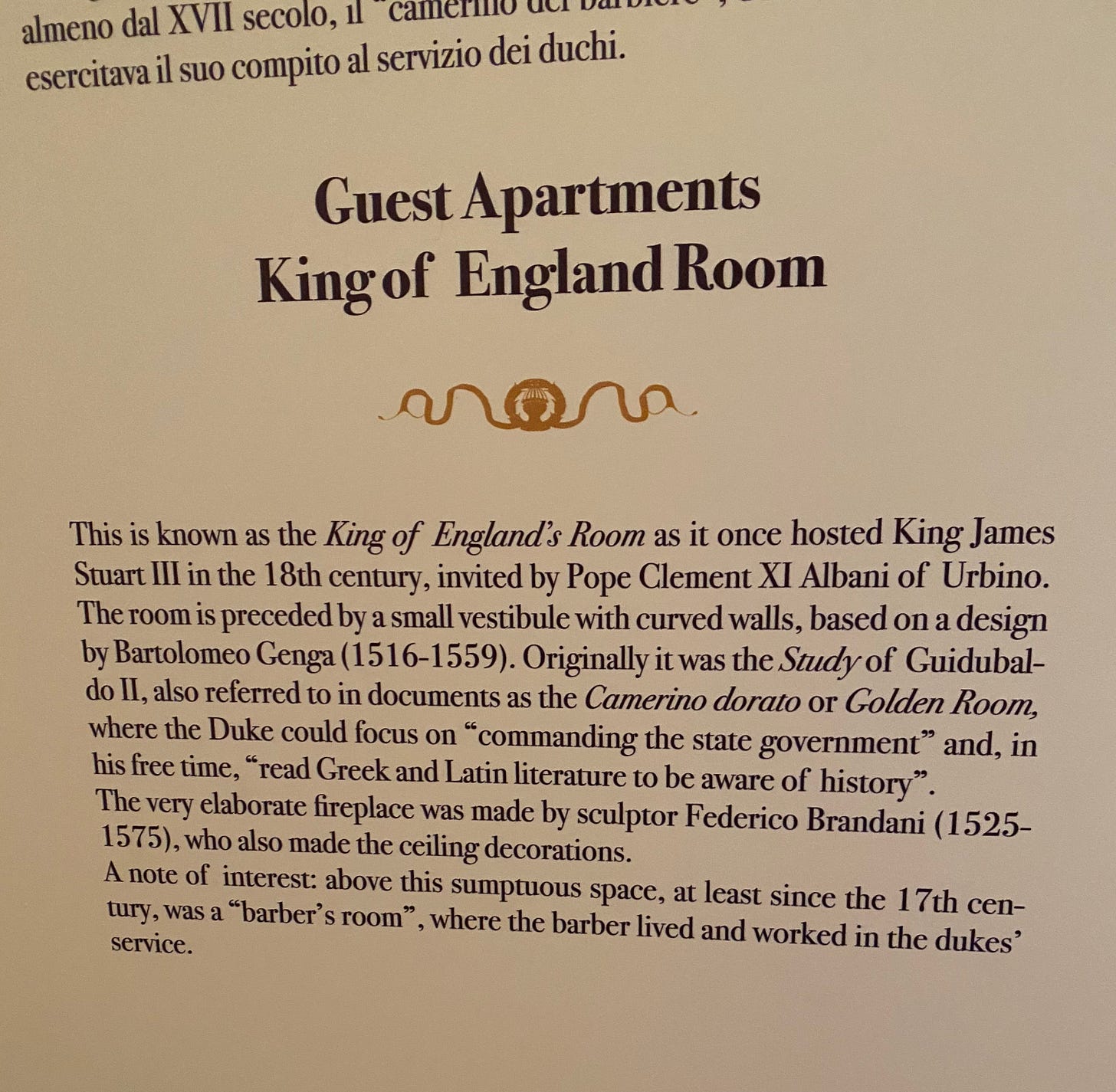
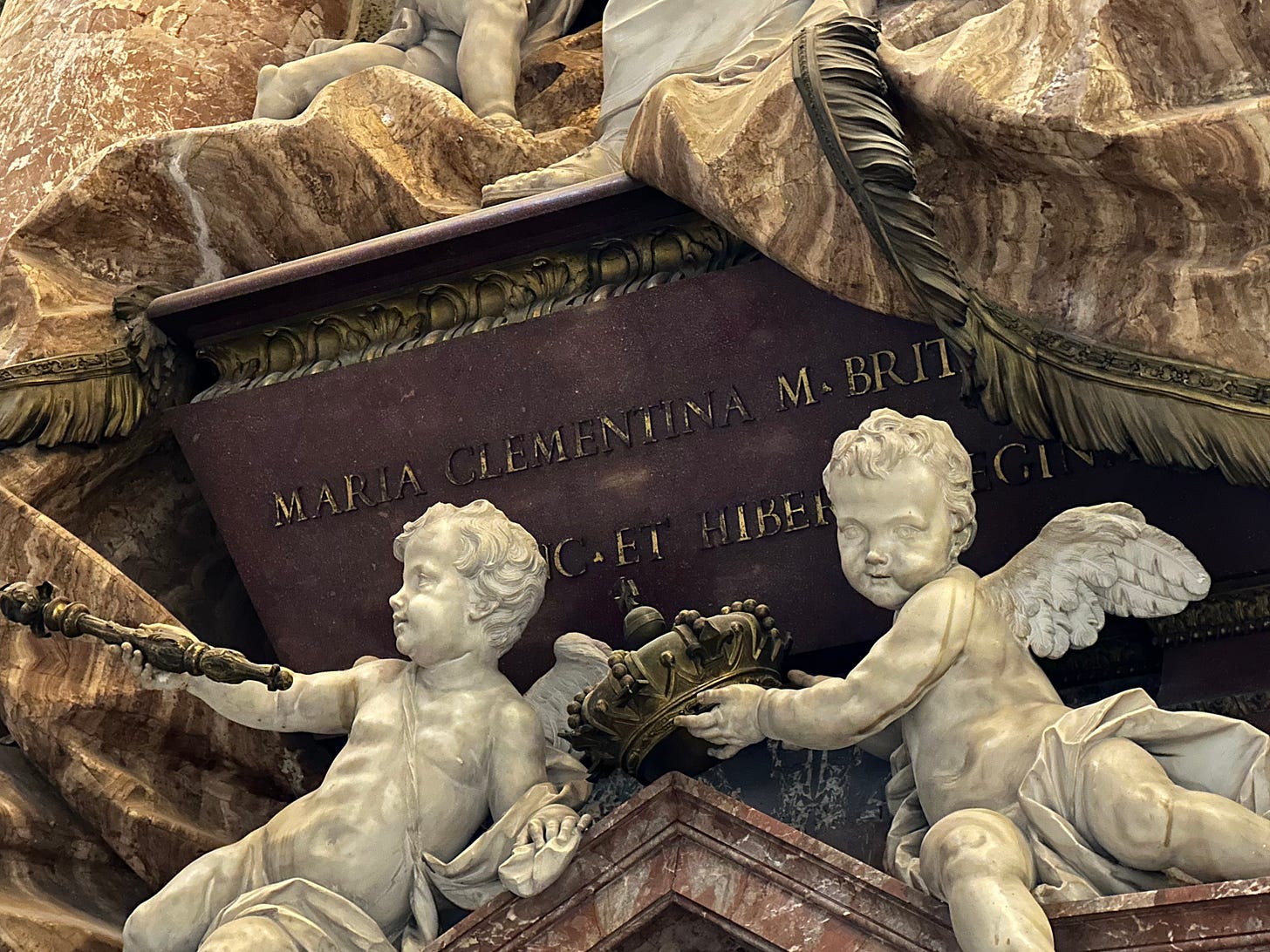
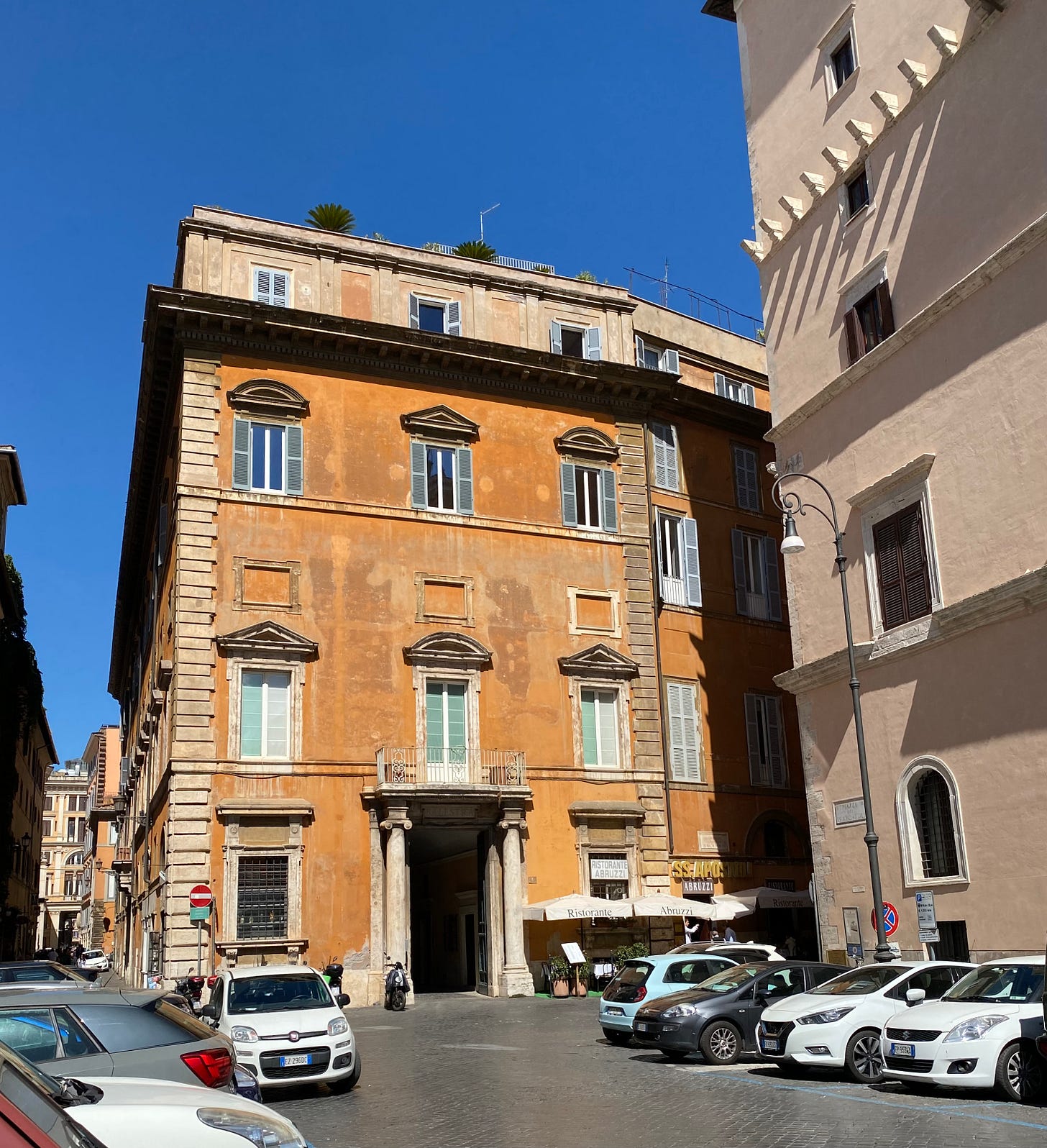
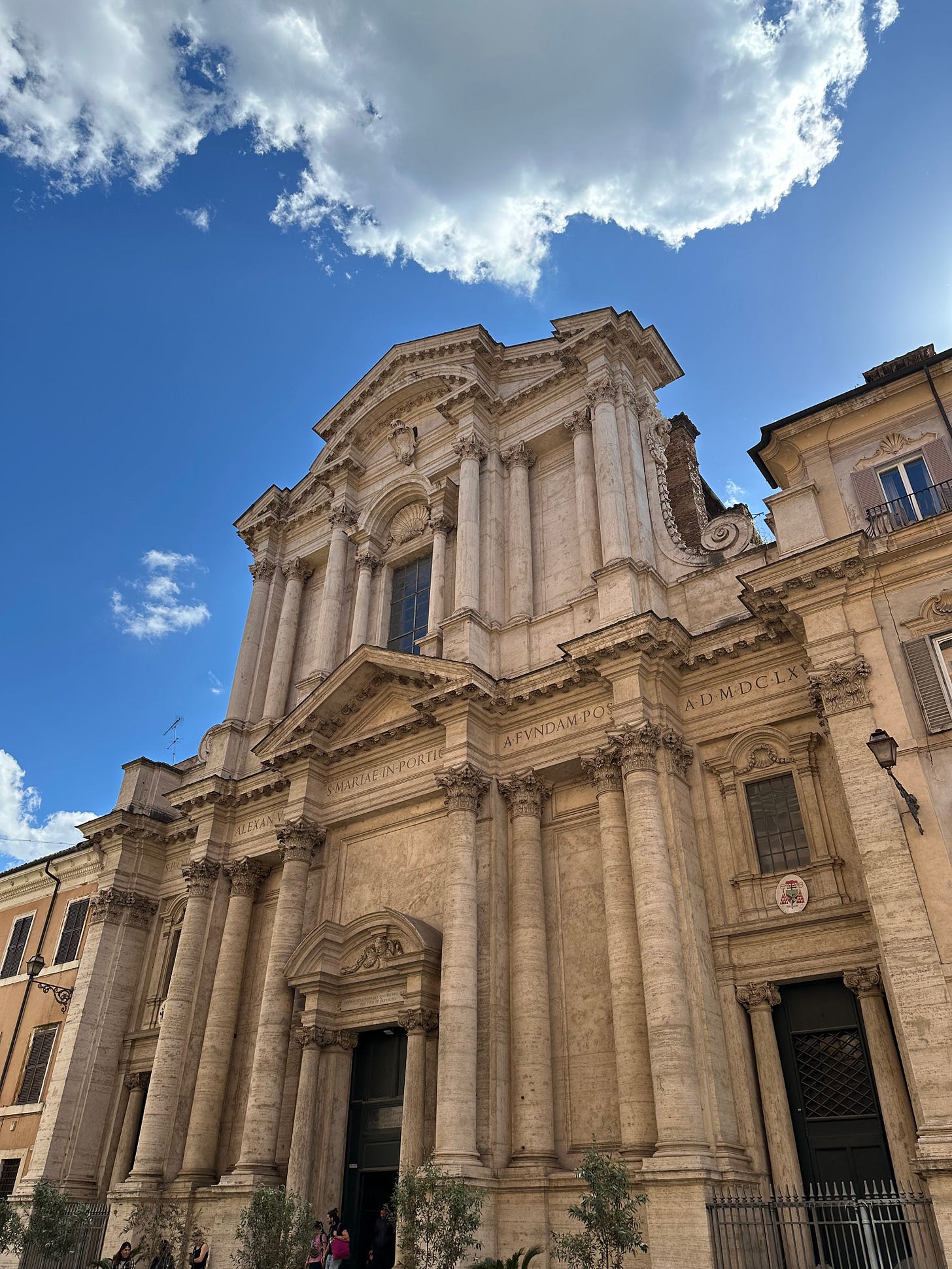
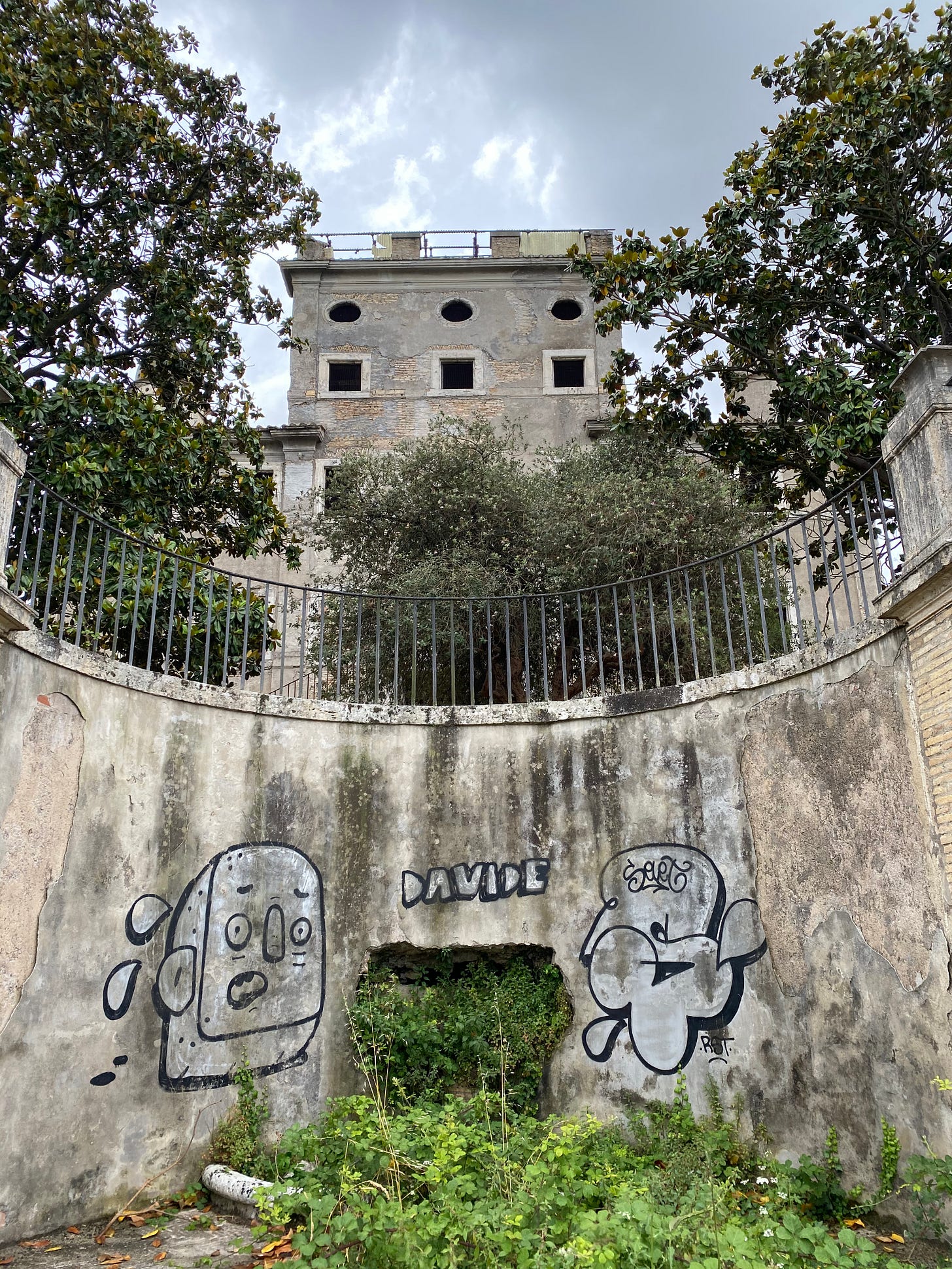
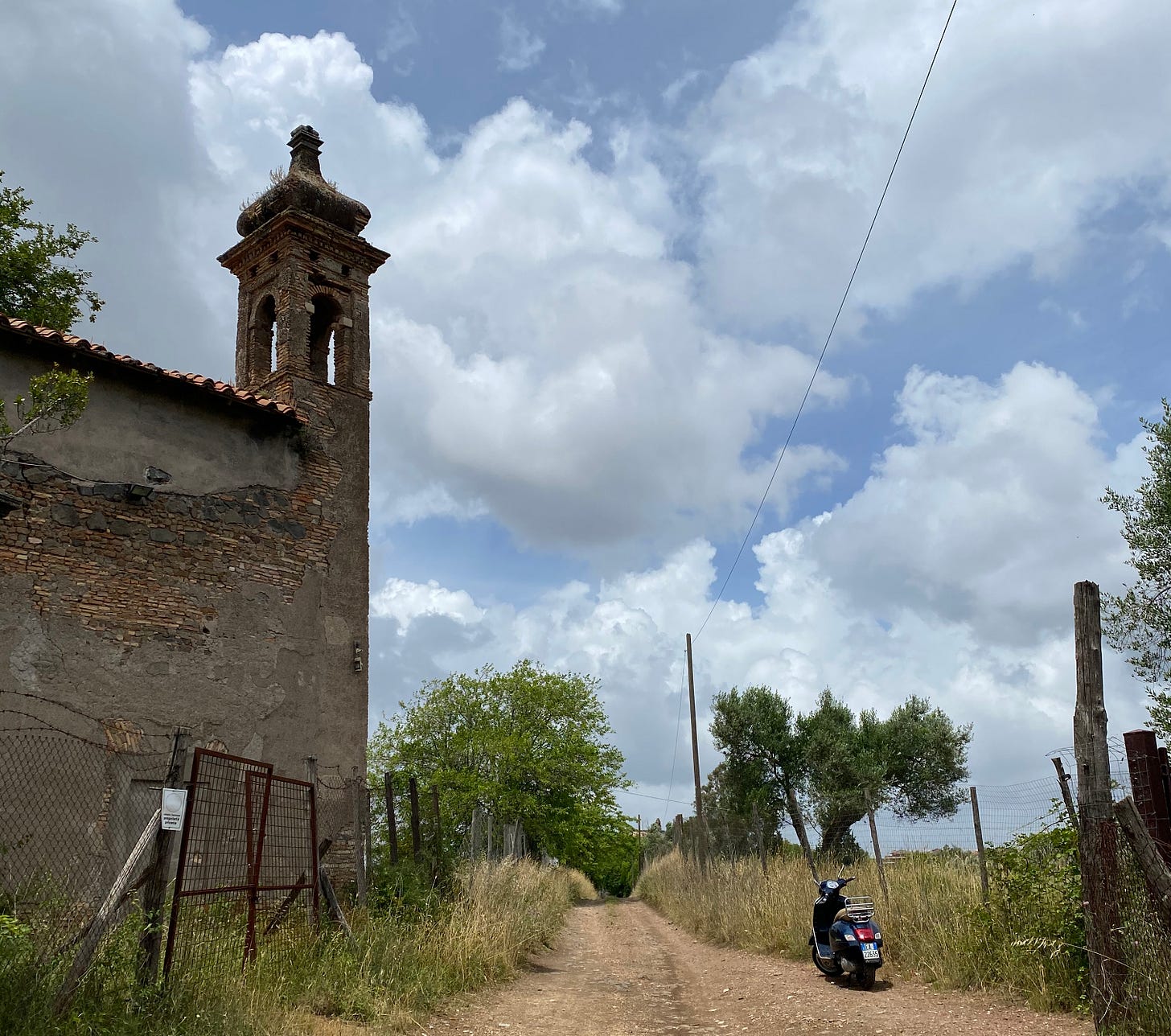
This is fabulous, as always!
I wonder how many monuments to women there are at the Vatican? I've only been there three times, but the only other one I can think of is Queen Christina of Sweden.